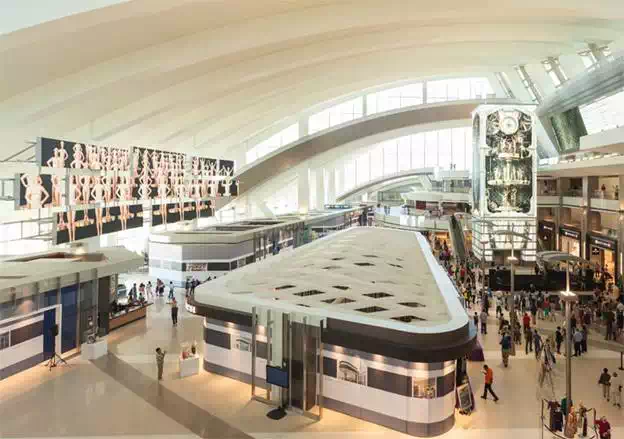Future Airports

The most amazing future airports! Singapore’s Changi Airport has stunning plans for the future. By the way, Singapore’s Changi Airport is world’s best airport!
When it opens in 2018 its majestic steel and glass design will incorporate five storeys above ground and five below, a huge indoor park with native flora and walking trails, and the world’s tallest indoor waterfall – the 40m “Rain Vortex” with its own night-time sound and light displays.



The world’s tallest indoor waterfall – “Rain Vortex”
Tom Bradley International Terminal at Los Angeles Airport has different plans for the future.
It features the largest immersive multimedia system of any airport in the Americas. Seven huge screens show Southern California scenes and quirky videos, the centrepiece being a 22.5m “time tower” whose striking images constantly change. These installations also react to passenger movement and real-time flight data.

A 22.5m “Time tower” is the centrepiece of the terminal’s multimedia display.


Tedious airport processes like check-in will increasingly be automated.
London Heathrow and Amsterdam’s Schiphol are already trialling self-service biometric passport gates that use facial recognition technology. Also, Japan’s All Nippon Airways provides travellers with “smart tablets” enabling them to check in quickly, navigate the airport, and receive real-time messages about their flights.
London’s Gatwick Airport, meanwhile, is building the world’s largest automated bag drop zone that will allow you to check in luggage as early as 12 hours before a flight, simply by dropping it onto a conveyor belt.

Facial recognition technology could extend to discerning expressions or body movements that suggest somebody may be carrying contraband or likely to be a security risk, experts believe, although such technology could fall foul of privacy campaigners.
The laborious X-ray process could be in for a makeover, too.
US firm Genia Photonics has created a “laser molecular scanner” that penetrates clothing and other organic materials to expose traces of explosives or drugs.
The tech, which some speculate will eventually be rolled out at airports, scans multiple people at once and works from a distance of 50m (164ft).
Gatwick is one of the airport that uses facial recognition technology to make sure queue time in security is always below five minutes.

iTEC is a system developed by Spanish firm Indra, can predict where an aeroplane will be at any point on its journey based on a series of inputs such as radar, flight plan and weather.
This means the air traffic controller can create a “conflict free” plan for each aircraft which requires fewer changes of altitude and thrust, making flights smoother, faster and less polluting.
The system will eventually cover German, Spanish, Dutch and UK airspace.
